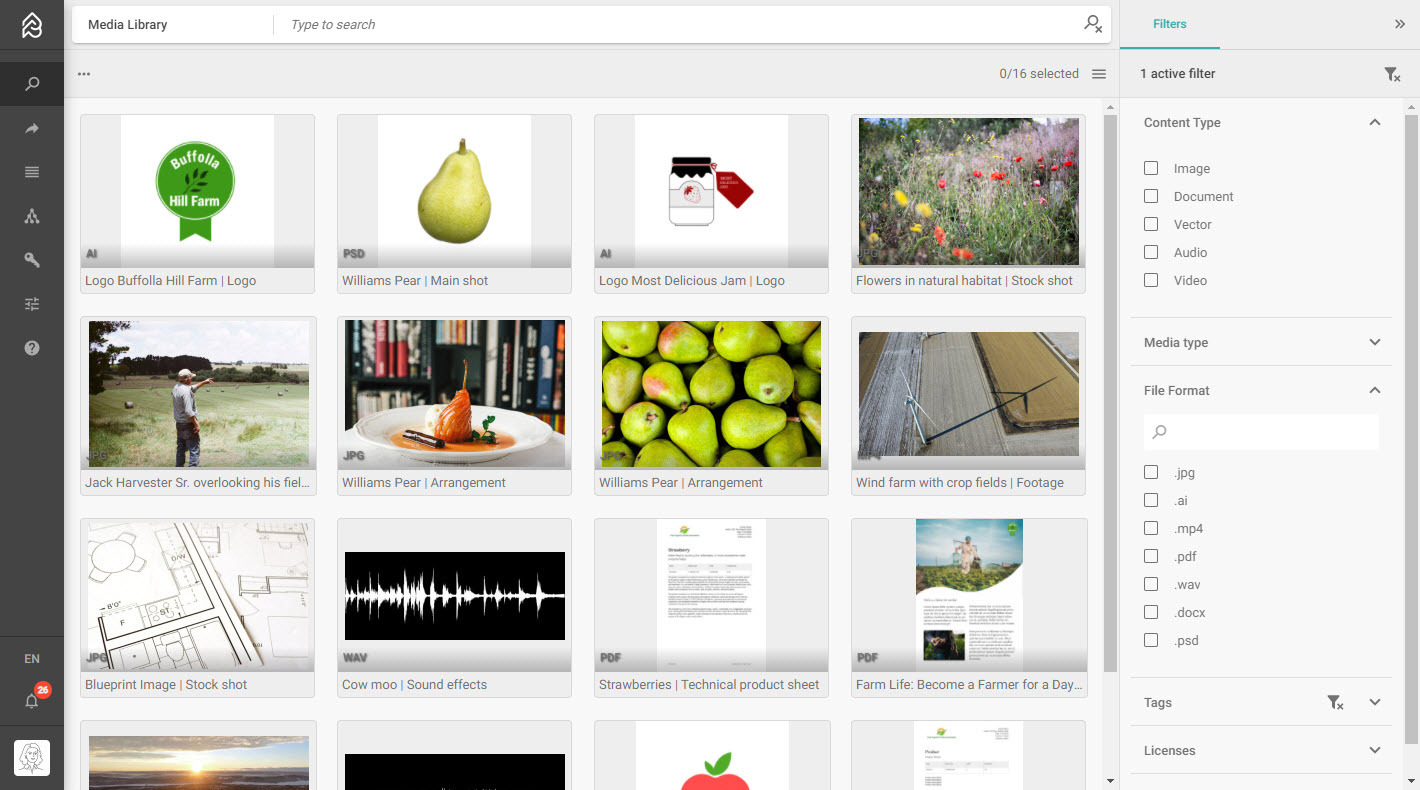
Picturepark: Complete Buyer's Guide
Enterprise-grade digital asset management platform
Picturepark is an enterprise-grade digital asset management platform that combines AI-powered automation with sophisticated metadata management to address complex ecommerce asset workflows.
Market Position & Maturity
Market Standing
Picturepark operates in the competitive enterprise DAM market, positioning itself as a sophisticated solution for organizations requiring advanced metadata management and AI-powered automation capabilities[41][53].
Company Maturity
Company maturity indicators suggest established operations with documented enterprise customer implementations across luxury goods, fashion, and manufacturing sectors[41][55].
Industry Recognition
Industry recognition and analyst positioning claims referencing 2024 reports should be verified against current evaluations given the 2025 timeframe[57][58].
Strategic Partnerships
Strategic partnerships and ecosystem positioning appear focused on ecommerce platform integration, with documented connectors for Shopify and other major platforms[45][51].
Longevity Assessment
Market consolidation trends in the DAM space create both opportunities and risks for Picturepark's positioning. Organizations evaluating the platform should assess vendor stability and long-term viability as part of their selection criteria, particularly given the substantial implementation investments required[26][32].
Proof of Capabilities
Customer Evidence
Luxury brands like Faber Castell have successfully implemented the platform for product cataloging, while Belden achieved significant efficiency gains in campaign preparation workflows[46][55].
Quantified Outcomes
Quantified customer outcomes include measurable improvements in operational efficiency. Eric Ehlers at Belden documented product cataloging time reduction 'from weeks to hours' through AI auto-tagging implementation[55].
Market Validation
Market validation includes customer adoption across fashion, manufacturing, and luxury goods sectors where style-based asset delivery and complex product taxonomies provide competitive advantages[41][55].
Competitive Wins
Competitive wins appear concentrated in scenarios requiring sophisticated metadata management and omnichannel distribution capabilities, though specific competitive displacement data requires verification from independent sources[53].
Reference Customers
Enterprise validation comes from implementations across diverse sectors including manufacturing (Rieter), construction (Hilti), and luxury goods (Faber Castell)[55][56].
AI Technology
Picturepark's AI auto-tagging system employs computer vision algorithms to analyze images and videos, detecting objects, faces, and text patterns while automatically associating assets with existing product taxonomies[41][54].
Architecture
Picturepark's technical foundation centers on a microservices architecture that enables flexible deployment options and scalable asset management capabilities[41][59].
Primary Competitors
Picturepark competes in the enterprise DAM market against established players including Aprimo, Cloudinary, Bynder, and Canto[53][57].
Competitive Advantages
Competitive advantages include semantic relationship capabilities enabling contextual asset discovery beyond keyword-based search[41][53][54], adaptive metadata schemas providing flexibility for complex product taxonomies[41][59], and microservices architecture enabling flexible deployment options[41][59].
Market Positioning
Market positioning focuses on enterprises requiring sophisticated metadata management and AI-powered automation, though AI accuracy limitations requiring 15% manual correction may disadvantage against more accurate alternatives[46][54][60].
Win/Loss Scenarios
Win scenarios appear concentrated in complex product catalog management requiring semantic search, omnichannel distribution needing automated asset variations, and regulatory compliance scenarios benefiting from permissioned portals.
Key Features

Pros & Cons
Use Cases
Integrations
Featured In Articles
Comprehensive analysis of Digital Asset Management for Ecommerce for Ecommerce businesses and online retailers. Expert evaluation of features, pricing, and implementation.
How We Researched This Guide
About This Guide: This comprehensive analysis is based on extensive competitive intelligence and real-world implementation data from leading AI vendors. StayModern updates this guide quarterly to reflect market developments and vendor performance changes.
60+ verified sources per analysis including official documentation, customer reviews, analyst reports, and industry publications.
- • Vendor documentation & whitepapers
- • Customer testimonials & case studies
- • Third-party analyst assessments
- • Industry benchmarking reports
Standardized assessment framework across 8 key dimensions for objective comparison.
- • Technology capabilities & architecture
- • Market position & customer evidence
- • Implementation experience & support
- • Pricing value & competitive position
Research is refreshed every 90 days to capture market changes and new vendor capabilities.
- • New product releases & features
- • Market positioning changes
- • Customer feedback integration
- • Competitive landscape shifts
Every claim is source-linked with direct citations to original materials for verification.
- • Clickable citation links
- • Original source attribution
- • Date stamps for currency
- • Quality score validation
Analysis follows systematic research protocols with consistent evaluation frameworks.
- • Standardized assessment criteria
- • Multi-source verification process
- • Consistent evaluation methodology
- • Quality assurance protocols
Buyer-focused analysis with transparent methodology and factual accuracy commitment.
- • Objective comparative analysis
- • Transparent research methodology
- • Factual accuracy commitment
- • Continuous quality improvement
Quality Commitment: If you find any inaccuracies in our analysis on this page, please contact us at research@staymodern.ai. We're committed to maintaining the highest standards of research integrity and will investigate and correct any issues promptly.